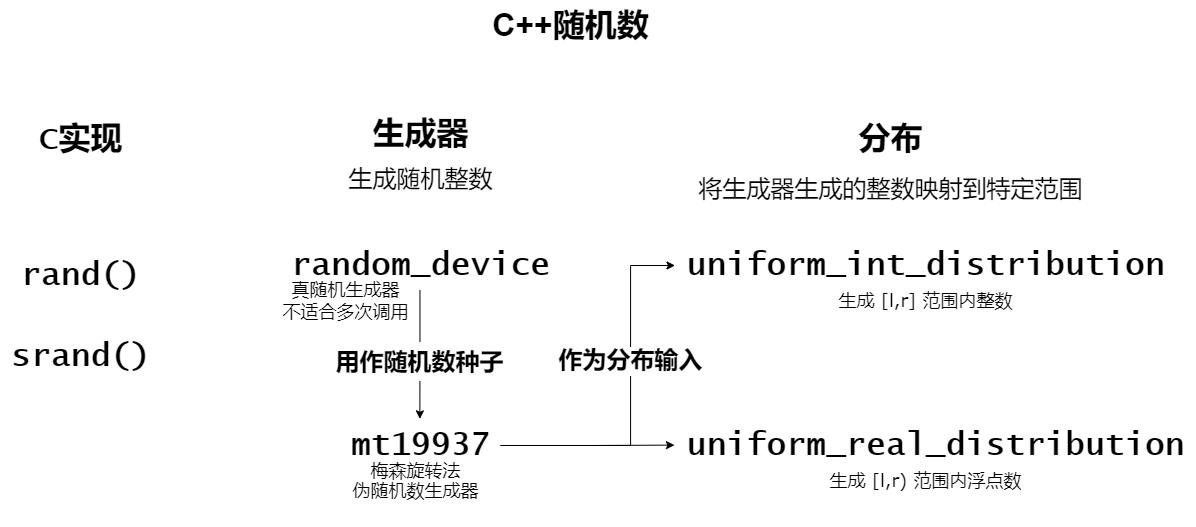C++ 随机数相关问题
学习一下如何在 C++ 中合理、现代地生成一些高质量随机数。
rand 函数
生成一个在 [0, RAND_MAX] 范围内的随机数。使用 srand 设置种子。
在 Windows 下, RAND_MAX 的值一般为 32767,而在 linux 环境下,RAND_MAX 的值一般为 2147483647。因此,千万不要在交上去的代码中写出 rand()<<15|rand() 这样的代码(在 Windows 环境下工作正常,但是在 linux 环境下会有符号整数溢出)。
如果要生成一个在 [l, r] 范围内的随机数,可以使用 rand()%(r-l+1)+l (注意:[l, r] 内每个数的概率是不同的,但是一般来说,这样也够用了)。
示例
1 | |
random 库
上面的算法看起来很好用,但是在程序跑的很快的时候(比如对拍),一秒内生成的随机数都是一样的(那你拍了个寂寞)。
C++11 引入了一套全新的 random 算法。我们来分别介绍几个概念。
random_device
通过硬件生成真正的不确定随机数(如果硬件不支持,标准也允许使用伪随机生成方法实现此函数),返回一个 unsigned int。
实现了仿函数。调用后返回一个在 unsigned int 范围内的随机数。无需设置种子,得到的就是随机数。
1 | |
一般来说,我们将其的输出用作其他随机数生成器的种子。
为什么不直接把这个作为随机数生成器?以下摘录自 cppreference。
note: demo only: the performance of many implementations of random_device degrades sharply once the entropy pool is exhausted. For practical use random_device is generally only used to seed a PRNG such as mt19937
大意:当熵池耗尽后,random_device 的性能急剧下降。(因为这是一个真正的不确定随机数生成器)
总之,在代码中只调用一次,把它作为其他随机数生成器的种子就可以了。
mt19937
是一个梅森旋转法的预定义特化。构造函数接受一个种子。仿函数生成一个随机数。
1 | |
distribution
你可能觉得有 mt19937 之后,我再取取模,除一除就够了。但是不要忘了,我们之前说过,用取模生成的随机数的每一个数的概率是不均匀的。
为此,C++ 给我们提供了一些预定义的分布,让我们将生成器 (就是可以随机生成一个 unsigned int 的随机数生成器) 生成的随机数以某种概率映射到一个范围中。
我们需要记住两个分布:uniform_int_distribution 和 uniform_real_distribution 分别用来生成区间内的整数和浮点数。(uniform_int_distribution 两端闭,uniform_real_distribution 左闭右开)
使用方法:模板的参数为生成随机数的类型(uniform_int_distribution 默认 int,uniform_real_distribution 默认 double)可以省略。构造函数指定上下限。
1 | |
1 | |
总结
画一张图。
